Top o’ the mornin’ to ye, Tor.commers—as no actual Irish person ever said, ever—and welcome back to the Wheel of Time Reread Redux!
Today’s Redux post will cover Chapter 24 of The Shadow Rising, originally reread in this post, and Chapters 25 and 26, originally reread in this post.
All original posts are listed in The Wheel of Time Reread Index here, and all Redux posts will also be archived there as well. (The Wheel of Time Master Index, as always, is here, which has links to news, reviews, interviews, and all manner of information about the Wheel of Time in general on Tor.com.)
The Wheel of Time Reread is also available as an e-book series! Yay!
All Reread Redux posts will contain spoilers for the entire Wheel of Time series, so if you haven’t read, read at your own risk.
And now, the post!
Before we begin, a reminder that the format of the Reread Redux has changed: from now on I am only going to be commenting on chapters in which my reaction has changed significantly from before, based on the knowledge I had at the time.
Although this time we aren’t actually skipping anything, so that’s all right.
Onward!
Chapter 24: Rhuidean
 Redux Commentary
Redux Commentary
[In which Mat and Rand see the long-abandoned sights, take two separate trips via highly dubious plaza decor, and Mat unfortunately gets exactly what he bargained for.]
I enjoyed looking back at the commentary on this chapter, which features the explication of my theory about how of all of our Hero Starter Set™, Mat is the one who seems to be the most American in flavor. I mostly enjoyed it, though, because looking at the comments reminded me of how pleased I was that many people seemed to agree with me, and thus assured me that at least I wasn’t being completely nuts to propose the idea in the first place.
Not everyone agreed with me, of course. This is the Internet, after all, and hey, it’s not like my theory was ironclad or anything. What Mat is “like” is obviously very much in the eye of the beholder, and as always, the Reread was never meant to be anything other than highly subjective. But it was nice that my theory did seem to resonate with quite a few.
Of the dissenting opinions, I was especially intrigued by the assertions that Mat seems more Irish in character than anything else. I find that interesting because I can agree with it without actually backing off my own assertion one bit. While the Irish were very far from being the only immigrants to come to America throughout the 18th and 19th centuries, they constituted a significant percentage of them, especially from the 1840s on, and represented an even larger percentage of those who moved out west as the territories beyond the Mississippi River opened up. The American Old West being where so many of the stereotypical “American hero” type tropes evolved, the strong Irish influence on that entire era (and, therefore, on those tropes) cannot be underestimated.
I know, because Far and Away said so. And who can disbelieve a movie that has Tom Cruise so enthusiastically murdering an Irish brogue?
What?
“I have no intention of marrying. And I have no intention of dying, either, whether I am supposed to live again or not. I walk around with holes in my memory, holes in my life, and you stare at me like idiots. If I had my way, I would want those holes filled, but at least answers to my questions might fill some in my future. You have to answer—!”
“Done,” one of the men growled, and Mat blinked.
Done? What was done? What did he mean? “Burn your eyes,” he muttered. “Burn your souls! You are as bad as Aes Sedai. Well, I want a way to be free of Aes Sedai and the Power, and I want to be away from you and back to Rhuidean, if you will not answer me. Open up a door, and let me—”
“Done,” another man said, and one of the women echoed, “Done.”
Just gonna take a pause here and marvel again at how I never once suspected that the ashanderei the Foxes give Mat in this chapter (or, technically, the chapter after the next) was anything more than a snide calling card that also happened to be a useful weapon. Seriously, I kicked myself hard when I read about Moiraine’s rescue in TOM, and how the spear was literally the method by which you “get away” from the Eelfinn, because OF COURSE, but yeah, before that? Never thought of it. I definitely felt pretty dumb that day.
Chapter 25: The Road to the Spear
Chapter 26: The Dedicated
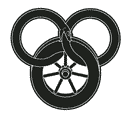 Redux Commentary
Redux Commentary
[In which Rand takes a trip through the Wayback Ter’Angreal, and it is made of awesome, and I use Tetris metaphors to explain it, because of course I did.]
I don’t have a lot to say about the actual content of these two chapters that I didn’t already wax rhapsodic about cover at length in the original commentary, but what I would have added if I could have, but couldn’t because the end of the story didn’t exist yet so I didn’t, would have been a further rhapsodic waxing about how beautifully these two chapters are mirrored in the two chapters of TOM in which Aviendha got her own chance to trip the light apocalyptic, only in the opposite direction.
Symmetry, in a story-telling sense, wasn’t always something the Wheel of Time as a whole was able to achieve, mostly just owing to the sheer sprawling size of the beast. After a certain point, some stories just get too big to keep in neat-sized containers. The separate episodes of the Wayback/Wayforward Ter’angreal, though, are an exception to that truth.
Even as I was deeply upset at the time at the implications of Aviendha’s glimpse into the future, I was simultaneously geeking out at the cleverness of using what I still think is probably one of the most original methods of infodumping ever achieved in SF literature, twice, and the second time in a way that reflects and complements the first time rather than merely rehashing it, to wonderful effect.
Let’s just say, I was very impressed by all four of these chapters, y’all. I said at the time, and again now, that I consider Aviendha’s trip in TOM to be the near equal to Rand’s trip here, in terms of story-telling excellence, and probably its superior in terms of visceral emotional impact. Because in TSR we are still just getting to know the Aiel, but by the time Aviendha makes her trip through the glass columns, we have known and followed the Aiel through nine books and mumble-something years, and gotten heavily invested in both their culture as a whole and in more than a few individual characters’ lives as well.
Granted, some of those I could have done with a little less investment in (*coughSevannacoughcough*), but even given that, it’s safe to say that I had been very well set-up by TOM for the revelation of the Aiel’s demise to sucker punch me right in the feels, hard. In that way the two trips are bookends on this emotional journey: Rand’s discovery of the Aiel’s past started us firmly on our investment and interest in the Aiel, leading directly to Aviendha’s discovery of their future having the impact it did.
Just, really well done. Kudos to both authors on achieving such near-perfection in these two sequences.
And we’re gonna stop here, because the next bit deeeeeeefinitely needs its own post, heh. See y’all subsequently!










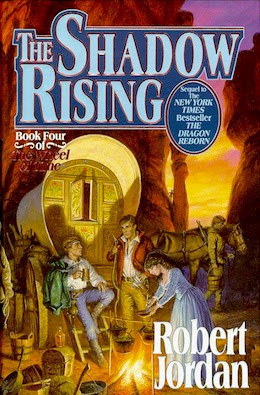
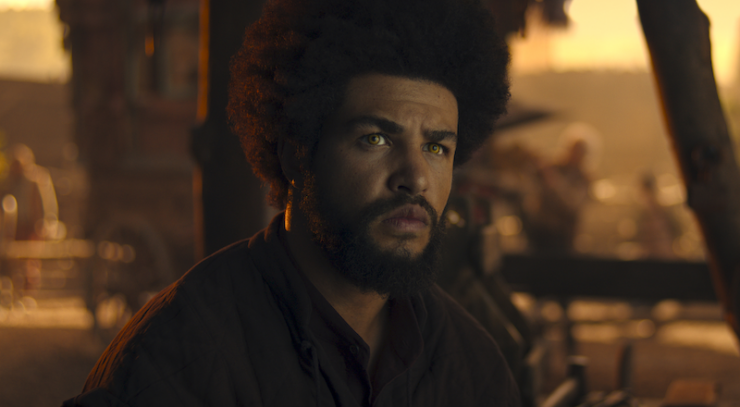
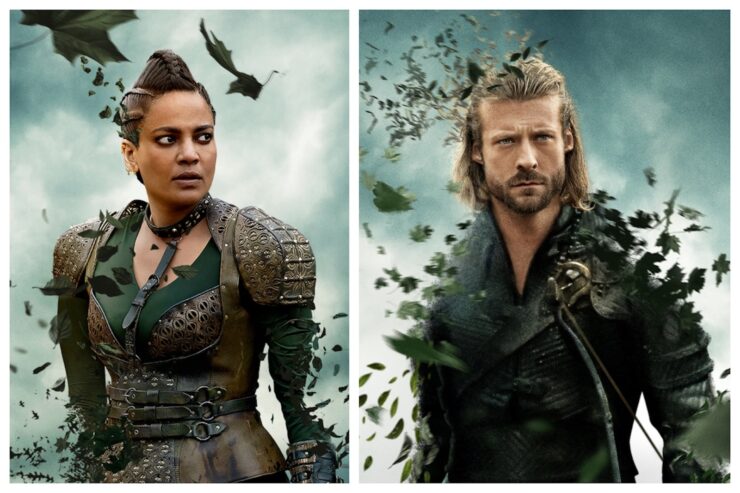
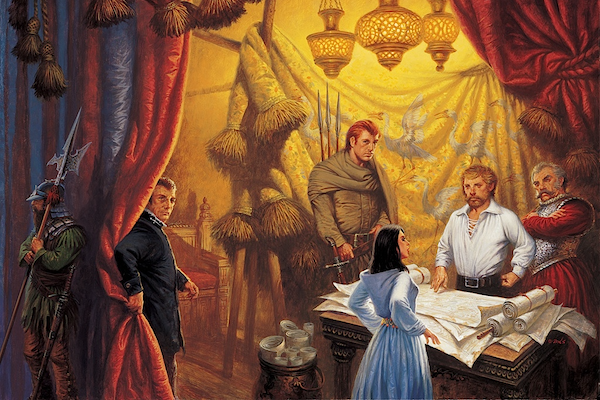
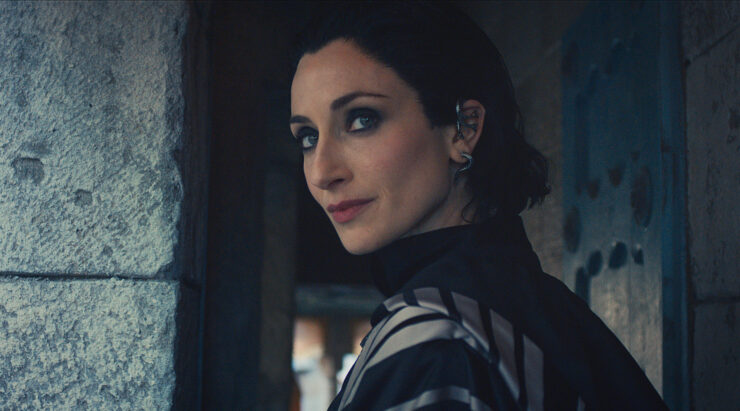
Mat again got more than three answers/gifts from the Finn: he got back to Rhuidean and a way to open a door.
Well this is the first redux post that I was able to see in real-time, and what an amazing place to be. Mat’s interaction with the Finn and the “deal” that he made without even knowing is sheer genius. It completely sets up his journey to becoming the pivotal player that was needed in the Last Battle. Reading these reduxes really makes me want to go back and re-read the series, again, for like the 10th time.
“I know, because Far and Away said so. And who can disbelieve a movie that has Tom Cruise so enthusiastically murdering an Irish brogue?”
I had to read that three or four times, trying to remember, who did Tom Cruise murder in that movie? Then I just about fell off my seat laughing… D’oh!
Were the Wetlanders who crossed the Spine of the World and whom Rhodric led the fight against Hawkwing and his armies? This is mentioned when Rand is seeing the Aiel history through Mandein’s eyes. IIRC, Hawkwing tried to conquer the Aiel.
As an aside, am I correct in recalling that in addition to sending his armies to what is now Seanchan, did not Hawkwing also send an army to Shara? If so, I wonder what ever happened to that army.
I think that Tzora is where Whitebridge is currently located. Tzora was the city which destroyed into a glass like substance. Whitebridge also has a large glass-like area. Once again, RJ is turning a Biblical story on its head (Sodom and Gomorrah). Leigh points out that Lanfear is a type of Lilith and Eve (something I never considered). In the Bible, the angels did not find at least 10 good people in Sodom. Thus, they ultimately destroyed the city. In WoT, it was the “peaceful”, “good” citizens of the city (the Aiel) who saved the non Aiel inhabitants from the magic being (in this case, the mad Aes Sedai). Eventually, the magical being killed all of the “good people” and wiped the city from the map.
Leigh, what are your thoughts on a race or entire nationality (the Aiel) of being hereditary servants of another class of people: Aes Sedai. From what little evidence we have, the Aiel were well treated by their Aes Sedai masters and never thought of being “free.” IIRC you are critical of the Seanchan society where a person would be made the property of another (the da’covale). As with the Aiel in the Age of Legends, some da’covale became very respected (the so’jhin). If you are critical of the Seanchan society for the use of slaves who accept their position, you should be as critical of the Age of Legends.
(I intentionally did not mention damane. In my opinion, this is a different situation as the damane are not viewed as humans. Rather, they are viewed (IMO) as talking animals. The only difference between a damane and an animal in Seanchan culture is that a damane can speak the same language as a human.)
Leigh, WoT does provide an answer to your question as to whether everybody who goes through the glass forests sees the exact same thing or sees things through the eyes of his/her ancestors. Unfortunately, it is an unclear answer. When Rand is back in the tents with the Wise Ones, he asks Rhuarc if people see the same thing. Rhuarc tells Rand that from the clan chiefs Rhuarc has spoken to about what is seen, Rhuarc says different men see roughly the same things but through different eyes. Not sure how that helps.
Thanks for reading my musings.
AndrewHB
AndrewHB @@.-@
IIRC, one of Hawkwing’s children led a large “expedition” to Shara and no one returned.
I seem to have gotten waaaay ahead of the redux in my reread. How in the world did that happen? Could it be b/c TSR is such an action-packed book, with 2 plot lines splitting into 4 and each one of major importance, and minimal Plodding™? This has gotta be one of the best books in WoT.
Nevertheless, I found myself headdesking at Mat as he and Rand depart Rhuidean. But have no fear, Gawyn will have his day soon, or his desk at least.
I couldn’t follow Rand’s Ancestatron journey in the book and can’t follow it in your synopses, but I’m glad you understand it. Maybe if I read the latter a few times, I’ll finally get it.
I like Mat mostly for his snark, which can be found in a wide variety of characters, especially Brandon Sanderson ones.
Was Rand the first visitor to make the fountain in Rhuidean flow?
I don’t have anything to say about these chapters except that they are Awesome, but I am certainly enjoying the Reread and look forward to it every time. Thanks Leigh!
AeronaGreenjay @6-
I recall none else flowing the fountain.
I was going to say the same thing as 1 – it seems like he gets 4 things: the holes in his head filled, a way to be free of the Power (the medallion), a way to be free of the Finn (the spear) and back to Rhuidean (hanging on a tree). Unless those last two are basically seen as one thing.
This was one of my favorite parts of my favorite books – I remember reading through it voraciously; my sister was in the hospital at the time (she’d gotten a bite which was infected; she recovered) so I remember reading it in the hospital room.
@@.-@ AndrewHB
No, the timing is off by about 2,000 years. Hawkwing died about 1100 years before Rand’s birth. (Hawkwing’s death set off the War of the Hundred Years, the conclusion of which was the beginning of the New Era. The Winternight attack in tEotW took place in 998 N.E.). But the first Aiel memory we see with Mandein, the Agreement of Rhuidean, was at least 2,000 years earlier than Hawkwing’s death, at the beginning of the Third Age. Each subsequent ancestor memory we read is earlier than the one before it, gradually going back several hundred years through the Breaking of the World, the War of the Power, and the hundred year societal Collapse after the drilling of the Bore. So the fight that Mandein referenced Rhodric as having, happened sometime earlier in the Third Age or at some point during the chaotic centuries of the Breaking. Hope that helps @6 AeronaGreyjoy also make sense of this also.
@9 Lisamarie
The spear was the way to be free of the Finn/back to Rhuidean, and was Mat’s third boon (or fourth, depending on interpretation). Hanging from the tree was the price, which Mat failed to set during his bargain.
6. AeronaGreenjoy – @10 above offers a very good explanation, I would just add that what we are reading is history seen through the eyes of one family, one line, from father, to grandfather, to great grandfather, to great great grandfather, and so on. Each time Rand takes a step forward, he goes backward in time, through the eyes of whichever family member was alive at that particular point in time. So in a sense we are seeing these people aging backward, like re-winding a video.
In the original reread, Leigh posted a timeline for the Aiel.
“Sixteen generations. I wrote it down to keep it straight:
->Mandein
?
Comran
?
->Rhodric
?
->Jeordam
->Lewin
?
->Adan
->Jonai
->Coumin
?
?
?
->Charn
(The arrows indicate who actually gets a POV.)”
AndrewHB @@.-@
I’m pretty sure the only glass-like feature of Whitebridge is the bridge itself. And it’s relatively intact. Whereas places ‘turned to glass’ during the War of Power tended to just be shapeless lumps of glass leftover from either massive amounts of Balefire or some other massively destructive use of the One Power.
I think the POV’s of Aiel history that each Clan Chief sees is the one specific to their ancestor. The pivotal moments however, may be the same things.
Refresh my memory, does every step forward take Rand back through time, or does it start in the distant pass and every step forward brings him forward?
@13 Every step forward is another step further back in time. Presumably everyone sees visions starting from when the Aes Sedai deliver the Prophecy of Rhuidean and charge the Aiel with using the way-back ter’angreal and then each step forward brings a vision of another ancestor from a more and more distant past until you reach one whose memories are of a time before the Bore was drilled (presumably you only see through the eyes of relatives whose gender matches your own).
I always seem to remember Domon mention the glass sheet in TEOTW when he talks to Rand and Mat about collecting old stuff. Am I correct? Or just confusing details?
BTW Leigh, keep up the good word, love it!
This was such powerful stuff, I cannot let this epic go! How many times have I read it, reeling through it on a purely emotional basis. Matt, cranky idiot that he can be, getting molded into a savior of the world. Rand – seeing in reverse – how the fierce Aiel had evolved from a peaceful folk – essentially Tuatha’an – understanding what their “sin” was all about, and so coming to realize what it meant to be the Car’a’carn. This takes two already magical (ta’veren) men to an even higher level, like Masters of the Universe in different ways, and makes them two of the most memorable characters in fiction. The rest of the book builds Perrin into a similar power, in yet another realm. I started to reread the book when I discovered Leigh was doing this “redux”; I’ve finished it now and have begun again with ToM; I’ve come to see that Sanderson’s concluding books are as satisfying as Jordan’s. I hope to get my grandchildren to read and come to love these books.
Brief side note: no, I don’t think at this point we have enough info to know what the access ter’angreal are (i.e., that they’re tied to the Choedan Kal we’ve already seen/heard of). We do know they’re important though since Rand pays attention to them and Egwene found a broken one in the TAR Panarch’s Museum in Tanchico, and the astute among us might have caught the similarity in description between them and the giant statue in Cairhien.
I too loved the multiple mythological associations Jordan made. Having the Avendesora tree hearken to both the Tree of Life from the Bible and the life of Buddha was a great conflation, and of course the way Jordan used stories of the Fair Folk to create the Finn was fascinating and rather unnerving. Definitely following in the tradition of Papa Tolkien, who was tired of seeing the cute little winged fairies elves had become and wanted to hearken back to a different tradition, though here Jordan was focusing not on beauty, grace, and artistry but the power and danger of magic.
I wonder if the things from Rhuidean that Moiraine took to Cairhien will get brought out of storage so Aviendha can examine them, and what will be revealed about their powers. I was always very curious about them.
*smirks* Right, Mat, keep telling yourself you won’t help Rand. We didn’t even need his later thought that he’d go into the columns after an hour to know that he was lying (to himself as well). I agree with Leigh from a different occasion when she pointed out that downplayed heroism is another reason so many of us love Mat. Probably because it seems more true to life to us. Which also relates to the type of quintessentially American hero she posited he is and how that also appeals. Because even setting aside how much American heroes have permeated the rest of the world and gained their own followings and loyalties, the simple fact is that as much as people still read fantasy because they love the idea of stories which take place in mysterious lands that reflect the exotic traits and tropes of the medieval, they still live in a modern world. So Mat’s brand of heroism would be bound to feel familiar and appealing, regardless whether it has an American origin or not.
Though I do agree with Leigh as well that the commenters who suggested Mat’s attitude and character more stem from the Irish is fascinating and does play into her original theory in exactly the ways she describes. (And whatever else may be said about Far and Away, I do believe it got more right historically than it got wrong–if not in the stereotypes it depicted than in showing they had some basis in fact/were inspired by something, and in rightfully showing how important the Irish immigrants were to that period of American history.) And I can’t deny that some of Mat’s biggest traits (drinking and gambling, snark, badassery, and reluctant but real heroism) are all things the Irish are well known for, and in at least some cases such things were/are accurate.
Regarding the ashandarei: I don’t think anyone guessed its purpose, or if they did they kept it to themselves, because I’m pretty sure otherwise it would have been debated extensively and lots of others, including Leigh, would have heard about it. But to be fair Jordan was very cagey, as there was nothing in either Mat’s request or the words written on the spear to suggest it was the third thing he asked for. I was going to comment that it seems odd they didn’t immediately grant it as soon as he said “I want to be away from you and back to Rhuidean” and that they’d fulfill it with something he could use to escape them later. But then I looked at the next thing he said, “Open up a door” and realized the reason they didn’t grant it instantly was because they were waiting for him to specify how he wanted to get away; either the spear was the only means they had to make a door that wasn’t a one-time thing or ability on their part, or they were convinced he’d never figure out what it was for and thus were laughing mockingly at him from afar, believing when he came back he’d never escape them. Too bad for them he was smarter than they gave him credit for!
As further proof, BTW, that no one else thought of what the spear was and could do, remember Sanderson saying there was a big thing people had missed in books 4-6, and one of the main mysteries in those books (but which always stayed in the background, never really addressed) was of the spear, since it appears without explanation in this book, and then throughout the next two Mat is always thinking about it and its writing–clearly Jordan dangling it before the reader, taunting us with trying to figure out its riddle. What’s interesting is the memories were mentioned as often as the ashandarei (in fact often in the same passages), but after people figured out what was up with them, they didn’t try and similarly unravel the spear.
The Ancestatron: there…really isn’t much I can say that hasn’t already been said. While it turns out the Aiel future Aviendha sees in ToM ended up being even more emotionally impacting because of it depicting something which had yet to happen rather than which already had, thousands of years ago, and to a people we had come to know and love rather than one we were just meeting (as Leigh so astutely points out), it can’t be denied this journey is still deeply powerful, emotional, and critical to WoT. And none of that has changed with numerous re-readings, other than perhaps to notice new details and points I hadn’t before.
As just a few examples: the fact the ones who helped the Aiel, the People of the Dragon, He Who Comes with the Dawn, ended up building Cairhien, the Hill of the Golden Dawn–nice parallel, the Wheel certainly does create a lot of these! Morin, the first Maiden, and her interactions with Jeordam–how is it she saw his face in the dream? Is she a dreamwalker, and therefore a future Wise One? And was her comment about him making a good father just seeing his future, or was it implying she and he would end up married? If so, ironic considering she just became a Maiden and declared the spear to be her husband.
The random Aes Sedai who told Jonai that Ishamael was still free–Jordan just casually dropping such bits in to explain to us all of Ba’alzamon’s weird comments from the previous books, explaining how he could have created the Black Ajah or orchestrated the Trolloc Wars and the War of the Hundred Years if he was supposedly sealed in the Bore. Then Jonai earlier thinking of Lews Therin’s banner as being accursed and that it should have been destroyed; some thought thanks to ambiguous syntax that he was talking about Callandor, which since it turns out to be a True Power sa’angreal (plus its lack of a buffer) would indeed make it cursed in a way.
I still think this is proof that either Jordan made a gaffe or was giving an Aes Sedai answer when he explained when and how Callandor was made. I suppose when Solinda said the sword would “have to wait” was that she meant it had already been Seeded to become a sa’angreal, and that what would wait (and ultimately ended up never being done) was providing the buffer, but considering the fact they’re still talking about “Kodam and his fellows” who would presumably only be needed to attune the item to saidin, not to add the buffer, that tells me Callandor had been made but not yet attuned. Which in turn means since mad Aes Sedai (Jaric and Haindar) were on their way, this is already after the counterstroke, so the taint would be the reason Callandor became a True Power sa’angreal.
(That would also explain why Oselle was so concerned about “when” Deindre’s Foretelling applied–if they knew Callandor would be needed to seal the Bore, but it seemingly had just been done already only to result in the taint, it’d be pretty important to know why the Foretelling didn’t come sooner, so they could prevent the taint, and also just when Callandor would be used, i.e. how long would they have to live with the taint.)
Jordan claimed Callandor was made in the last days of the War of Power, which suggests before the counterstroke since it was Lews Therin’s strike that ended the war…but considering communications were disrupted, it’s entirely possible Callandor was made after the strike, but before news of it arrived, which would explain how it could have been made before the war ended but still tainted. Also, despite the strike officially ending the war, there was a lot more fighting still going on afterward during the Breaking, so technically the war wasn’t really over. And even if Callandor was Seeded before this scene, that still could have happened after the counterstroke, since we have no idea how long it is between Coumin’s scene (where word of the strike reaches the forces of the Light) and Jonai’s–there’s enough time for Coumin to abandon the Way, and of course there’s no sign of maddened male Aes Sedai in Coumin’s scene, so it must have been fairly significant. So it all adds together to suggest the taint is indeed the source of Callandor‘s nature.
Other thoughts: I think of all the parts of the Aiel’s fall from the Covenant, the one that always struck me was the explanation for why they veil themselves before killing–because of a mother “not wishing to see her son’s face on a killer.” Sad, and powerful. Another thing I think gives these chapters their power is the way everything is told backwards, from Rand’s most recent ancestor before Janduin back to Charn. (I can only assume Janduin’s experiences were kept out to keep from revealing Tigraine’s story until the proper dramatic moment, although the in-story reason would be because his life had more to do with Rand’s fulfillment of prophecy, not the Aiel’s origins.) Because doing it that way allowed Jordan to tease out the mystery piece by piece, use lots of painful dramatic irony, underscore that sense of inevitability, and build up to the final terrifying moment when the Bore was drilled; if that had been the first scene we saw, it would have made everything else a huge anticlimax.
It is odd that I didn’t really think of this whole scene as a parallel to the Fall, but it makes sense. Perhaps because the idea of a whole Utopian society coming down was so different from one pair of naive humans in a garden losing their innocence and peaceful lives obscured what was going on. That absolutely is what it is though…and since Leigh rightly pointed out Mierin/Lanfear’s key role as being that of both Eve and Lilith, I feel compelled to point out a few things. One, as someone in the original comments stated, the idea of Eve being to blame for the Fall and the church denigrating women because of her is actually newer than we think, and that many theologians and churchmen over the centuries actually blamed Adam just as much as Eve; it wasn’t till later people started twisting and reinterpreting the Bible to blame Eve alone.
Second, the reason it may be important to point out Jordan’s iteration is that while Adam was blamed (until later on in the Church’s history), Beidomon was indeed completely forgotten about despite the fact he was just as culpable in drilling the Bore. However, not only did Jordan later reveal that Beidomon was haunted the rest of his life by what he did, was never allowed to forget it, and eventually killed himself because of it, but the ultimate result of the strike was for male Aes Sedai to become tainted and mad and break the world. So even if men weren’t given equal blame in the creation of the Bore, they certainly were blamed for what happened when it was sealed. Which only makes Jordan’s assertions that the imbalance this created between men and women was what really ruined the world, and that men and women working together is proven time and again to be what was needed to save and restore it, all the more meaningful.
As for these memories being those of Rand’s ancestors alone, rather than a representative Aiel line chosen by the Aes Sedai who made the columns, and how this would seem to be way too convenient: Pattern. In which case this would seem to be one of the moments where Jordan’s in-story explanation for contrived coincidences being “all of reality made it happen this way because the events it needed to happen couldn’t any other way” didn’t work as well as it did for other explanations. I guess it all comes down to how much you can suspend your disbelief; I personally didn’t have a problem since it did fit the overall Chosen One/End Times/prophecy motif, but I can see why it would bother others, particularly since it’s the biggest, most incredible example of such contrivance in the series.
Also one side note: the comment that we may never know just what happened with Lanfear and how she ended up serving the Shadow after the Bore was drilled jibes rather well with her telling Perrin in AMoL that he had no idea what she had really gone through, that he was simply believing all the legends and stories without hearing her side of it. It does make me wonder what we never learned, because even knowing she was likely lying and/or exaggerating about some of it to play for sympathy, I can’t help thinking there really was more to it than we knew.
I do, of course, agree that the way these chapters and Aviendha’s in ToM mirror each other is very well done.
@@.-@ AndrewHB: I seem to recall the Guide said Hawkwing’s army he sent to Shara (with a daughter) was caught and slain, with his daughter executed.
Interesting theory about Whitebridge being Tzora, but how do you explain the city being turned into a glass-like substance, when all that exists of that in the present is the bridge? I got the impression the male Aes Sedai just left a blasted “burn radius” of the stuff where Tzora had been, but even if they turned its structures into the “glass”, why is there only a bridge? Was that all that got changed? Or did the rest of what was changed somehow get destroyed but for some reason the bridge survived?
I can’t answer for Leigh, but the impression I always got with the Da’shain was that they entered their servitude voluntarily, willingly, and even eagerly as a means of aiding those they saw as greater and being of use (even beyond seed singing). The da’covale, as much as they could become honored and powerful (and I wouldn’t say the Da’shain were powerful too, just honored), were placed in their status against their will, for losing face and making other gaffes that caused the High Blood to demote and indenture them. So that isn’t the same thing.
@6 AeronaGreenjoy: I would assume so. None of the male clan chiefs were channelers, it seems (because if they were, they’d have gone off into the Blight), and if the Wise One apprentices could channel, it would seem they didn’t think of such a thing. Probably because water is so rare a thing to the Aiel, they’d hardly imagine there could be any under Rhuidean to bring out through the fountains. Or maybe they just couldn’t sense the water, because they weren’t as strong as Rand?
@10 fernandan: Good point. Since Mat was unconscious (from asphyxiation) he couldn’t have been the one to use the ashandarei (and if the gate out of the Tower was being made right at that moment, so as to hang him from the tree, then he certainly didn’t use it since he didn’t even have it yet). So the Finn themselves must have used it to get him back to Rhuidean per the agreement, then hung him as the price. Either they left the spear because they knew he’d get rescued, or because their agreement bound them to do it even if Mat was dead or soon would be.
@13 alreadymad: I think you are right about the ancestor memories. I seem to recall one of the original commenters, or even Leigh herself after it was pointed out what Rhuarc said, had noted that because of how insular the Aiel were and how little time had passed, anthropologically-speaking, it actually makes sense that after going back through everyone’s immediate ancestors, the clan chiefs would all eventually descend from the same group of early Aiel and thus would see those same pivotal events, since they are all interrelated.
@14 fudgyvmp: Having the person match their gender makes me wonder: since we know of the Pattern and its contrived coincidences, would anyone like to bet that one of the ancestresses Aviendha saw was Morin, the first Maiden?
@15 Piwi: Not that I can recall. He mentions the “crystal lattice” that hums in the moonlight, and the mountain hollowed into a bowl with a silver spike that makes people ill who come near it. But that’s the only things even vaguely similar.